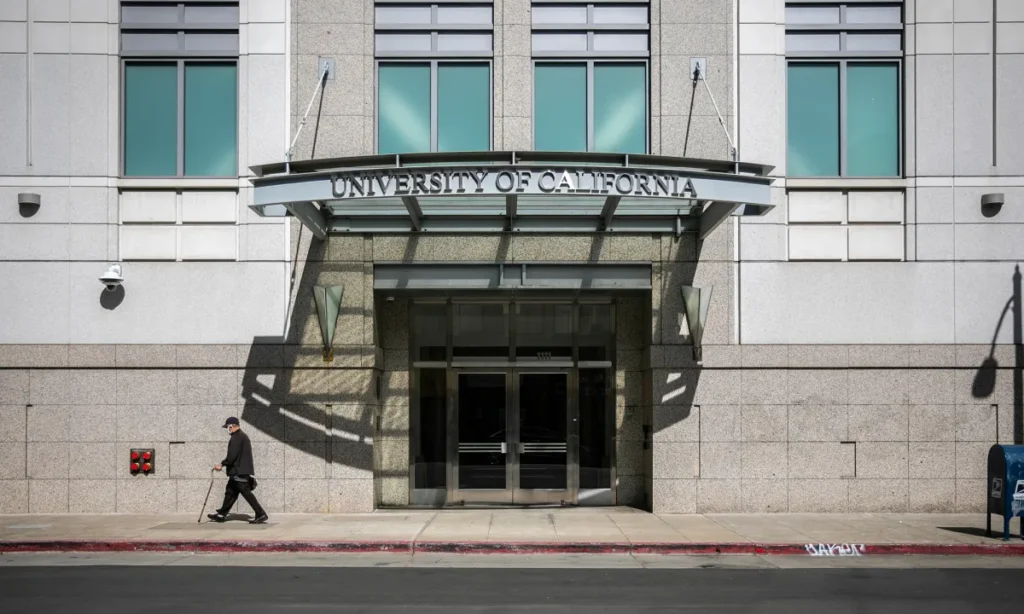Share
When Colette Barss sold her Seaside home this spring, her new east Garrison-area home had been sitting on the market for about 190 days. She ended up buying it for about $60,000 under asking price.
Today, that would be extremely unlikely.

By Kate Cimini
CalMatters
The price of real estate has soared across the country since the pandemic, and California isn’t immune. Across the state, home prices are up by almost 20% and the Central Coast, a tight housing market to begin with, has been squeezed even tighter with prices up an average of 25%.
Wealthier residents of San Francisco, San Jose and even Los Angeles are flooding markets from Redding to the Central Valley, hitting each suburb in between.
Fleeing the stifling shelter-in-place brought on by the pandemic and newly endowed with the ability to work from home, Realtors say their clients are searching for bigger floor plans, lots and access to the outdoors. A larger percentage than normal are buying investment properties that can serve as a vacation home, or even a primary residence, should they decide to make the move.
Realtors say their clients are prepared to bargain fiercely for a home, even coming in above asking price with an all-cash offer — which is often made possible by selling homes in pricey regions on their way out.
While that’s leading to an influx of wealthier landowners, it is pricing local renters — potential homebuyers — out of the market, experts say.
‘It’s Counter-Intuitive’
Barss sold her home in “deep quarantine.” They put the house on the market shortly before the shelter-in-place orders and then it “sat untouched” for 30 days as real estate agents were prevented from holding open houses. Once the orders lifted, though, Barss said it sold within two months.

“It was really stressful, I guess,” Barss said. “Sotheby’s had these procedures in place …about disinfecting. They had this little kit in our house with Lysol and disinfecting wipes, and the Realtor would always disinfect everything. It made me feel better about all of it.”
The hardest part, Barss said, living in her home while it was being shown. Where could she go when potential buyers showed up?
“I just drove around,” she said. “Where are you supposed to go when shelter-in-place was going on?”
Still, the pandemic has spurred buyers and sellers. Across the U.S., home sales and prices on everything from new construction to condos has soared since shutdowns began.
In some markets, new listings last hours, if priced right.
A release by the U.S. Census Bureau and the Department of Housing and Urban Development showed the number of newly-constructed homes sold nationally was 41.5% higher in October than last year, though dropped slightly from September.
Current sales and price statistics compiled by the California Association of Realtors (CAR) shows that home prices across the state in October were up by more than 17% from the same time one year ago, and the average sales price is more than $700,000.
Supply is the lowest it has been in years, CAR’s report said. California homes spend a median of just ten days on the market.
CAR data shows that the Central Coast has experienced the greatest price increase in California, with prices up an average of 25% year-to-year.
Data provided by the Monterey Coast Realty and Carmel Realty Company backed that up. Though prices are highest in already-affluent parts of the Peninsula, the realty companies reported the third quarter of 2020 was one of the busiest quarters in their market’s history.
Sotheby’s International Realtor Juliette (Jette) Ferguson helped Barss with the sale and purchase of both her homes. She said she saw this bubble start in spring, soon after the shutdown restrictions on home showings eased.

Ferguson said in her experience, buyers tend to be signing contracts for an average of $50,000 over asking on houses in the $600-$800,000 range. She tries to help them make the best decisions possible based on her understanding of the housing market, but she’s been a bit stymied by the strength of the market.
“It was counter-intuitive,” said Ferguson. “I didn’t expect COVID to make the market increase. Interest rates are low…and all the signs are there that it should be going down, but it’s still steady and up.
“It’s always their choice, but I’m blunt and I’ll say if I would do it or not at this time…but I’m afraid to say at this point,” she said. “I don’t want to be wrong and then they didn’t buy and then it’s more.”
Crowding and COVID-19
Monterey County was already stretched thin, with high home prices, abundant agricultural land and a lack of new development crowding too many people into too-few homes.
Between 2006 and 2018, the median household income in California grew 6.4%, but the average real income for the lowest 20% of households dropped by 5.3%. During that same time period, the cost of housing increased by more than 8% from 2017.
This led to an increase in houses busting at the trusses with generations of family members.
Based on 2011-2015 data from the Healthy Communities Data and Indicators Project, the California Department of Public Health found that in California, 8.2% of households are considered overcrowded, which health officials say can lead to a higher risk of COVID-19 among occupants.
The county has remained classified as purple tier — California’s classification for a case rate of seven diagnoses per day per 100,000 people, the highest rate — since the shelter-in-place orders were announced in March.
In Monterey County, the rate of overcrowded households stands at 12.7% and Latino households in California are the most likely to be overcrowded, at 20.1%. In contrast, only 1.7% of white households are overcrowded.

In Monterey County, about 75% of those diagnosed with COVID-19 are Latino or Hispanic, per county health data.
According to a 2015 fact sheet by researchers at San Diego State University and the Center for Immigrant Integration at the University of Southern California, an estimated 18%, or just under 9,000, of the 49,000 people who live in East Salinas are undocumented immigrants.
The researchers estimate only about 23% of undocumented immigrants have health insurance, compared with 63% of the U.S.-born population, excluding documented immigrants. As such, they may be less likely to take advantage of available healthcare.
A 2019 analysis of Census Bureau data by the California Budget and Policy Center found statewide economic inequality, resulting in millions being unable to afford basic bills. That economic inequality has grown has grown since much of the U.S. voluntarily shut down to stem the spread of the virus. As such, the state and various counties placed moratoriums on evictions for nonpayment of rent, protections that are set to expire in January.
That, says Monterey Bay Economic Partnership (MBEP) Housing Director Matt Huerta, could be a disaster for folks in already-tenuous situations.
“There’s national data coming out that says millions of people are concerned about their ability to make rent next month,” said Huerta. “We will see anecdotal evidence next year. We don’t know how many people are behind on their rent, but those state protections burn off at the end of January.
“It’s going to be critical that the state plays a role to intervene for the most vulnerable residents in our community so that we don’t exacerbate the health emergency with a flood of evictions,” he said.

California State Senator Anna Caballero (D-Salinas) launched the Neighborhood Homes Act (S.B. 1385) in the spring that she hoped would help create more housing in the area while not intruding on essential agricultural land.
“This pandemic is ravaging the Latino farmworker community because of lack of affordable housing, and people are required to double and triple up because it takes multiple wage earners to be able to afford the rents right now,” Caballero said.
“It’s frightening,” Caballero said. “The bottom line is that what we desperately need are housing units that people can afford that actually work in the community.”
Caballero’s bill would have turned underperforming or vacant big box stores –– like K-Mart or Toys ‘R Us –– into condos or apartments. She hoped this approach would create walkable new housing while keeping greenhouse gases low, and turning vacant eyesores into a boon to the community.
A similar development already took place in Salinas’s Creekbridge area, where a Safeway grocery store was built alongside more than 15 condos.
“If you live there,” said Caballero, “you can walk downstairs, get your insurance, do your banking, get your groceries. If you don’t live there, you’d never know (they were there).”
Caballero’s bill did not pass, which she attributed to the expedited sessions the Legislature was subjected to on the heels of the shelter-in-place rules. There simply wasn’t time to address the points other legislators raised, she said. Caballero is retooling the bill based on feedback she received and hopes it will pass in 2021.
“People have been losing housing ever since the recession,” Caballero said. “When so many people lost homes that were overinflated in value, you have investors who buy up homes. Here, locally, there’s a real need for small units so people can. get their foot in the door.”
‘Somewhat Trapped’

Realtors Anita Madison and Kim DiBenedetto respectively work at sister companies Monterey Coast Realty and Carmel Realty Co. Carmel Realty focuses on the luxury brand and only lists houses over $1 million, while Monterey Coast focuses on properties that are less than $1 million.
Comparing sales and prices quarter-to-quarter and year-over-year, DiBenedetto said the numbers they’ve seen are “crazy,” once they were able to start showing houses again. Many of their clients come from San Jose and San Francisco, she said, there’s simply more of them. They’re also getting more buyers up from L.A. than they typically see, she said.
While typically these buyers would be looking for a second home, many of them are turning it into their primary residences, DiBenedetto said.
“What you’re really seeing, too, even in the more affordable price points, like East Garrison and the Dunes, a huge percentage of those are people who work in Silicon Valley,” DiBenedetto said. “Normally they buy a little further north, like in Marina, but now they don’t even have to commute. They say, ‘I can buy anywhere.’”
The comparatively low infection rate in Monterey County, and particularly on the Peninsula, along with the ease of access to the outdoors was a huge draw for many of Madison’s clients, when looking at the congested cities of the Bay Area. In San Francisco and San Jose, too, the cost of high-rise condos and apartments has dropped, while the prices for single-family homes has climbed.

“If you’re going to pay what it costs to live in the city, you can be here instead, probably for less, work from home, and be somewhere that’s a lot more low-key,” Madison said.
“They just wanted out of the bigger cities,” DiBenedetto added. “If you live in a high-rise condo building, they felt somewhat trapped.”
DiBenedetto recalled one family she sold to, who purchased a second home in Monterey County so their son, who had preexisting health issues, had a lower chance of exposure to COVID-19 than he would in San Francisco.
While luxury housing is an important part of the market, MBEP’s Huerta said, the county has fallen far behind on its goals of building affordable housing, which would help spread out the farmworker population and lower rents, as well as the spread of COVID-19.
For that to happen, he said, elected officials at the city and county level needed to find the political will to make big changes: streamlining permitting and zoning and raising or reallocating funds for more affordable housing.
So far, Huerta noted, Monterey County has been more amenable to greenlighting luxury housing developments than it has moderate or affordable housing.
Without some sort of government intervention, a large group of people would find themselves worse off after the pandemic, Huerta said.
“We are one of these areas of the country that are seeing and going to see more of a ‘K’-shaped recovery, where you have kind of diverging paths,” said Huerta. “One path for folks that are going to do well: buyers and homeowners that have enough money to buy the higher homes. And then you have the other end of the ‘K,’ where people are suffering and going to suffer more. These people will have higher rents and (will be) unable to buy.
“The recovery is going to get worse for them.”

This article is part of The California Divide, a collaboration among newsrooms examining income inequity and economic survival in California.
About the Author
Kate Cimini is a reporter with The Salinas Californian covering ag, housing and health. She reported this story with support from the California Fellowship through the USC Annenberg Center for Health Journalism. Annenberg’s engagement editor Danielle Fox contributed engagement support to this story.
[activecampaign form=19]RELATED TOPICS:
Categories



















